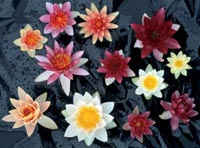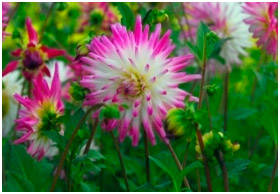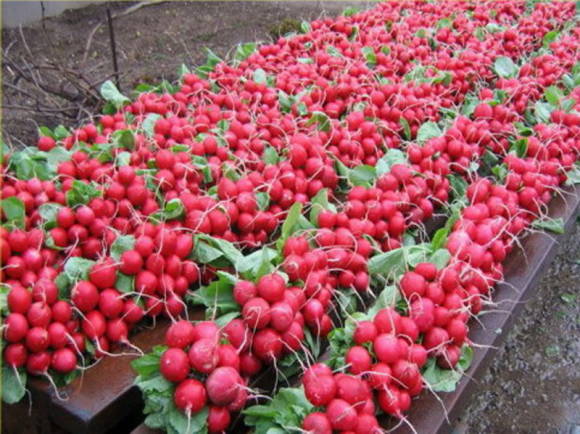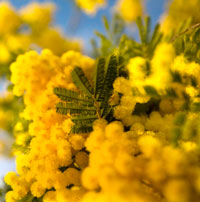It is more correct to call green currant "green-fruited black currant", in fact, this culture differs from black currant only in the unusual color of the fruit. Its fruits are almost completely devoid of anthocyanins - these are dyes that give black currants its color; in the absence of anthocyanins, the fruits look green.
The first selective forms of this culture appeared a little less than a hundred years ago in Siberia. Nurseries even tried to implement these forms, but neither the mass planting, nor even a significant demand for planting material among private gardeners followed, and this culture began to be forgotten. The Finns and the Germans did not forget about it, who in their countries laid serious plantations of green currant, and not without reason.

Useful properties of green currant
Green-fruited currants, like traditional black currants, are rich in nutrients necessary for the full development of the human body. Its berries contain provitamin A, a whole series of vitamins such as C, I, P, E and others, as well as phosphoric, citric, oxalic and malic acids, pectin, essential oil, sugars and, of course, useful for the stomach and intestines. cellulose.
Eating green currants during the season, you can normalize the intestines, increase your immunity, improve heart function, strengthen nails and hair, and improve vision.
You should know that green currants can even be consumed by people suffering from allergies to anthocyanins, since they are not present in the berries of this currant.
Features of green currant
The fruits of this currant do not have a currant taste, which is inherent in black currant and not everyone likes, the aroma of these berries is more subtle, and the berries themselves are more juicy.
Green currants ripen later than currants with black fruits, sometimes the period of maturity falls on the end of July and even the beginning of August, but if early spring is observed, then ripening may be earlier.
From an adult bush, you can collect up to 5 kg of berries.
Growing green currants
Seedling selection. It is better to choose seedlings in specialized nurseries, where they will sell you plants grown from cuttings or cuttings, but not small-fruited seedlings. It is best to take biennial plants, and when buying, first of all, attention should be paid to the root system and the bases of the shoots, because after planting, the shoots should be cut in half so that the bush begins to branch and develop fully.
Landing. Green currants can be planted both in autumn (October) and in spring (April, until the first half of May). This currant is winter-hardy, rather drought-resistant, especially undemanding to soils, but grows best on soils with moderate moisture, fertile, on sandy loam, loam. Prefers green-fruited currant soil with a neutral reaction.
When planting, leave a distance of about 1 m between the bushes, and 2 m between the rows. Planting should be done obliquely, at an angle of 35 degrees towards the south.
Plants are planted in planting holes, which need to be dug out about twice as much as a lump of roots. At the bottom of the hole, it is advisable to put drainage - broken brick or expanded clay a couple of centimeters thick, on top you need to put half a bucket of a mixture of river sand, humus and the upper fertile soil layer. On poor soils, it is advisable to add a teaspoon with a heap of nitroammophoska to the mixture.
When planting, the place where the roots pass into the trunk, that is, the root collar, must be deepened by about 6-8 cm.After planting, pour each bush with a bucket of water, and mulch the surface with humus 2 cm thick to save moisture.
Care for green currants, in essence, is no different from caring for black currants - this is loosening the soil, weed control, watering, fertilizing.
Weeds need to be removed as soon as they appear, loosen the soil about once a month so that a soil crust does not form, water as the soil dries up, and if there is no natural precipitation. Watering is most necessary during the period of active growth of currants (first half of summer), during the flowering period and during the ripening of berries. During these periods, under each bush, you need to pour a bucket of water every 3-4 days.
Top dressing... As for fertilizers, in spring it is advisable to add nitroammophoska dissolved in water in the amount of a tablespoon per bucket of water, this is the norm for a couple of currant plants. Repeat, reducing the dose by half, the introduction of nitroammofoska can be during the flowering period of the green currant.
Pruning... About once every three years, it is advisable to carry out sanitary pruning, removing all broken shoots, dried up and those that are three years old or more, replacing them with young ones. It is advisable to isolate the slices with garden varieties in order to exclude damage from glass or fungal diseases.
Pruning can be done in the first month after the end of winter - before the beginning of the growing season or in the last month after the end of summer, from dropping leaves.
Reproduction of green currant
Reproduction can be carried out in the same way as blackcurrant - by vertical and horizontally oriented layering, fresh and annual cuttings, and, of course, by dividing the bush.
Lignified cuttings should be cut in early September, dividing the shoots into pieces 12-15 cm long, and planted at an angle of 45 degrees into the ground, tilting to the north. In this case, 3-4 buds should remain on the surface, the rest of the cutting is deepened. Usually lignified cuttings root perfectly.
Green cuttings are cut at the end of the last month of spring - at the beginning of June and planted vertically in the greenhouse. Cuttings with sufficient moisture and nutrition in the soil root well, and in September you can dig up cuttings with a lobe of roots.
Vertical layers are obtained by hilling the bush about half the height, in autumn the shoots are uncooked, and those with roots are separated from the mother plant.
Horizontal layering is obtained by bending the shoots to the ground, fixing them to the soil surface with wooden hooks and hilling shoots that will emerge from the buds and rush up. In the fall, they are separated and divided into rooted parts.
Well, and the simplest thing is to dig up and divide the bush into several parts, after which each part is planted in a permanent place.
All these methods are vegetative, that is, they retain the varietal characteristics of the green currant.
Green currant varieties
 |  |
- Emerald necklace - its progenitor is the black currant cultivar Constance. This variety is distinguished by a mid-late ripeness period, the plant itself is actively growing, slightly spreading. Each brush contains up to 11 berries, the weight of each is about 1.3 g, the palatability is estimated at 4.3 points. The cultivar does not need pollinators. From a bush, you can collect up to 2.6 kg of berries. Interestingly, the variety is not affected by spider mites.
- Star of Solomon - the progenitor of this variety is also the cultivar Constance. This variety is distinguished by a mid-late ripeness period, the plant itself is actively growing, slightly spreading. Each cluster contains up to 8 berries, each weighing about 1.4 g, taste is estimated at 4.2 points. The cultivar does not need pollinators. From a bush, you can collect up to 2.4 kg of berries. Not affected by spider mites.
 |  |
- Prince Silver - the progenitors of this variety are the cultivars Titania and the Little Prince. This variety is distinguished by an average ripeness period, the plant itself is actively growing, slightly spreading. Each cluster contains up to 9 berries, each weighing about 1.2 g, taste is estimated at 4.3 points. A cultivar needs pollinators.Up to 2.2 kg of berries can be harvested from a bush. Not affected by spider mites.
- The Snow Queen - the progenitor of this variety is the cultivar Constance. This variety is distinguished by a mid-late ripeness period, the plant is actively growing, slightly spreading. Each bunch contains up to 18 berries, each weighing about 1.2 g, taste is estimated at 4.4 points. The cultivar does not need pollinators. From a bush, you can collect up to 2.6 kg of berries. Not affected by spider mites.
- Sunny Bunny - the progenitor of this variety are the cultivars Green Haze and the Little Prince. This variety is distinguished by an early ripeness period, the plant itself is actively growing, slightly spreading. Each cluster contains up to 8 berries, each weighing about 1.2 g, taste is estimated at 4.5 points. The cultivar does not need pollinators. From a bush, you can collect up to 2.4 kg of berries. Not affected by spider mites.
So, black green currant is a rich source of biologically active substances, its berries do not cause allergies, plants are frost-resistant and unpretentious to growing conditions, and berries ripen later than those of black currants, thereby allowing to extend the season of fresh currant consumption.
Photo by the author







